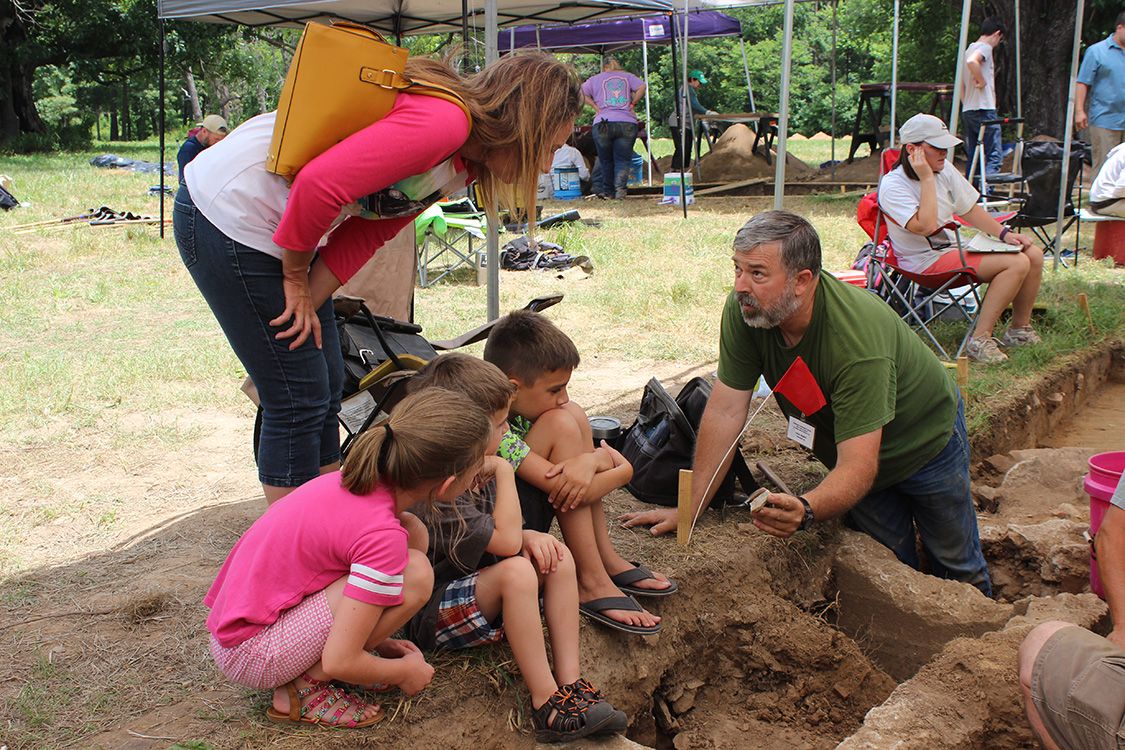
The 2018 Arkansas Archeological Society (AAS) and Arkansas Archeological Survey (ARAS) Summer Training Program was held at Pea Ridge National Military Park in Northwest Arkansas. The park commemorates and interprets the Civil War battle that took place on the site in 1862. Some 16,000 Confederate soldiers from Arkansas, Missouri, Texas, and Louisiana fought 10,500 troops from Ohio, Illinois, Iowa, and Indiana for control of northwest Arkansas. The battle earned the nickname “the Gettysburg of the West,” not only for the fierceness of the fighting, but also for the strategic implications of the battle―by losing at Pea Ridge the Confederates effectively ceded control of Missouri (and all-important St. Louis) for the duration of the war. Safeguarding St. Louis opened the door for U.S. campaigns down the Mississippi River that would split the Confederacy in two and establish the reputations of Ulysses S. Grant and William T. Sherman.

